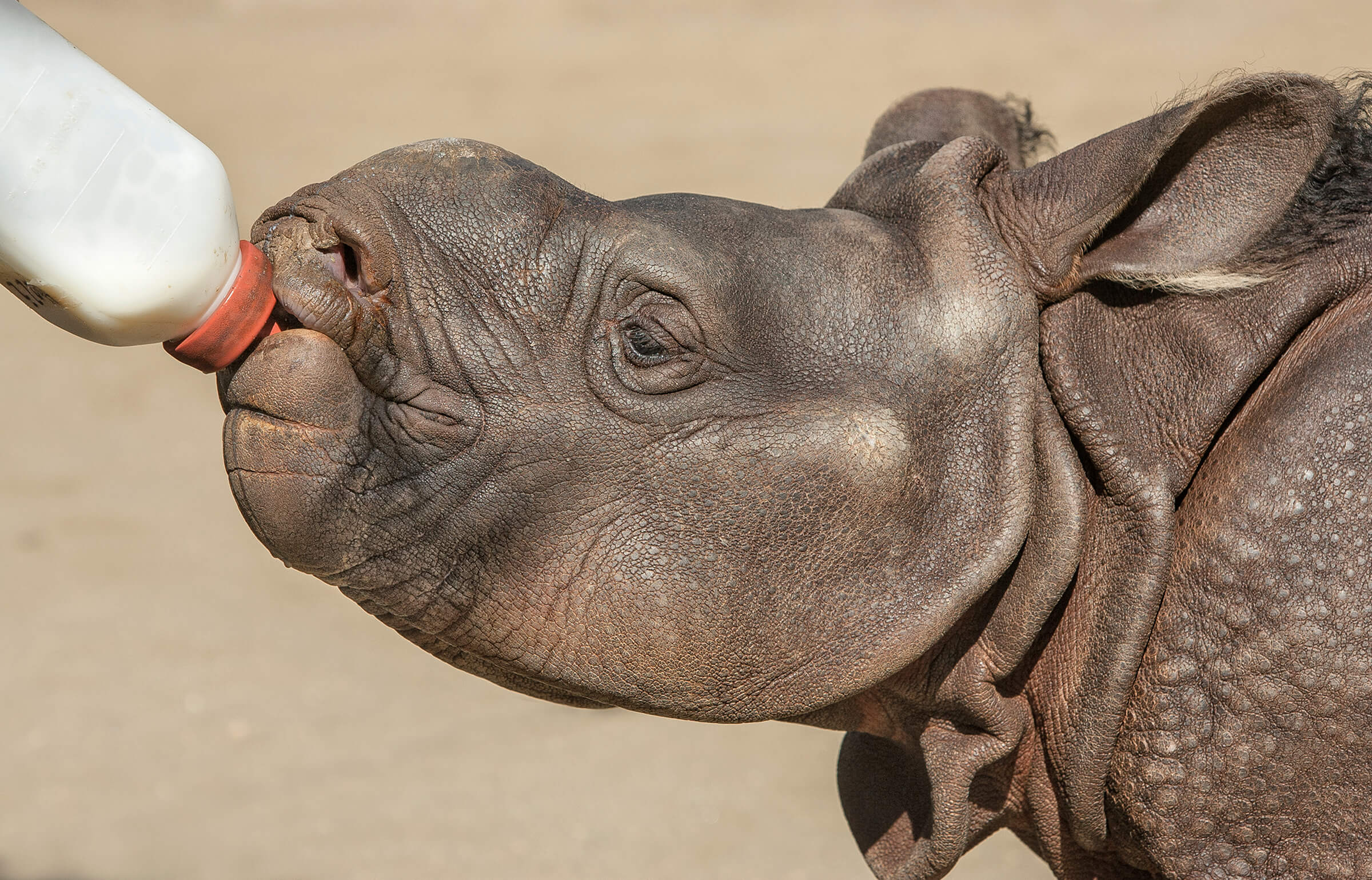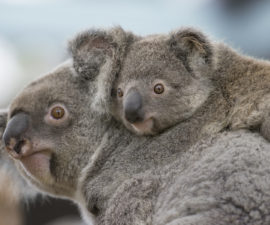BY Janet Hawes
Photography by Ken Bohn
The next time you take a trip to your local drugstore, pass by the baby section and check out the dizzying array of bottle nipples available. Commercially available bottle nipples for human babies come attractively packaged in many shapes and sizes; some are made of silicone and others of latex. Ask any new mom, and she will attest that babies can be finicky about which bottle nipple or pacifier they prefer, and once they choose one, they are stubbornly loyal. Consider that humans are a single species. Now, imagine you must find an appropriate bottle nipple for every mammal in the San Diego Zoo’s animal collection, from the newborn pygmy marmoset weighing less than half an ounce to a baby elephant weighing 200 pounds at birth!
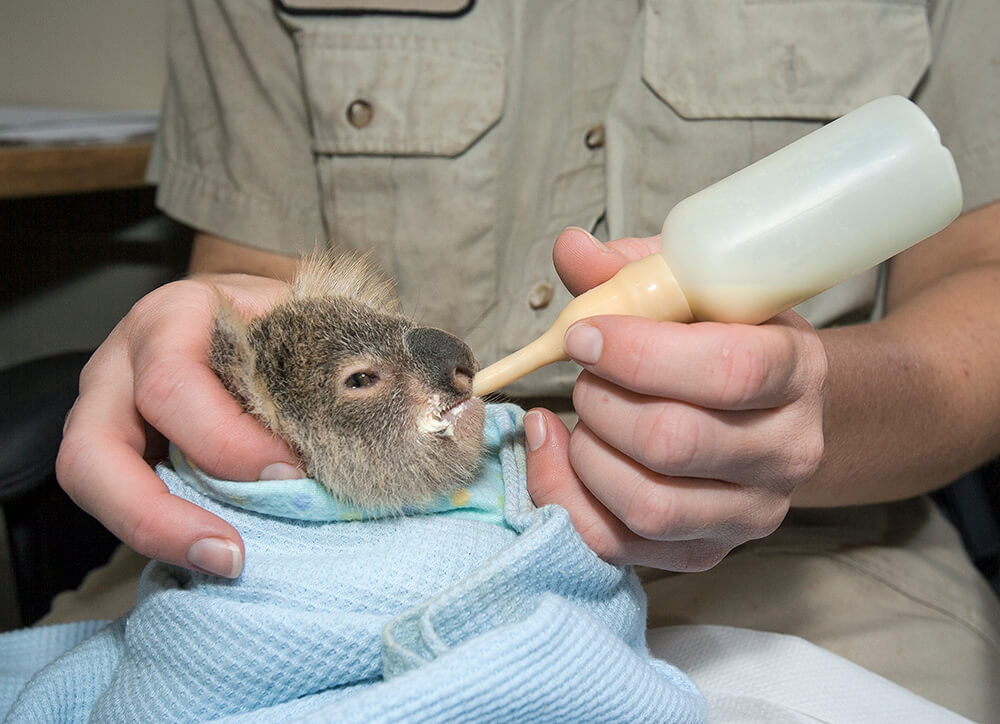
JUST RIGHT
Bottle feeding requires concentration on the part of the keeper to make sure the formula is flowing at the proper rate. Adjusting the angle of the bottle helps keep a perfect pace for babies like this koala joey.
Finding the perfect bottle nipple for every mammal species is a major hurdle in the assisted-care process at the Zoo and Safari Park. Though this small piece of equipment may seem simple, it is essential to a healthy baby and a successful outcome. Baby mammals rejected or orphaned by their mothers are precious and vulnerable patients, and to serve their nutritional needs, it’s important to consider the natural situation. The keepers mimic nature whenever possible, knowing that it is the best resource. They consider several things: what is the shape and size of the natural nipple? What is the shape and size of the baby’s palate? What is available that most closely matches the natural situation?
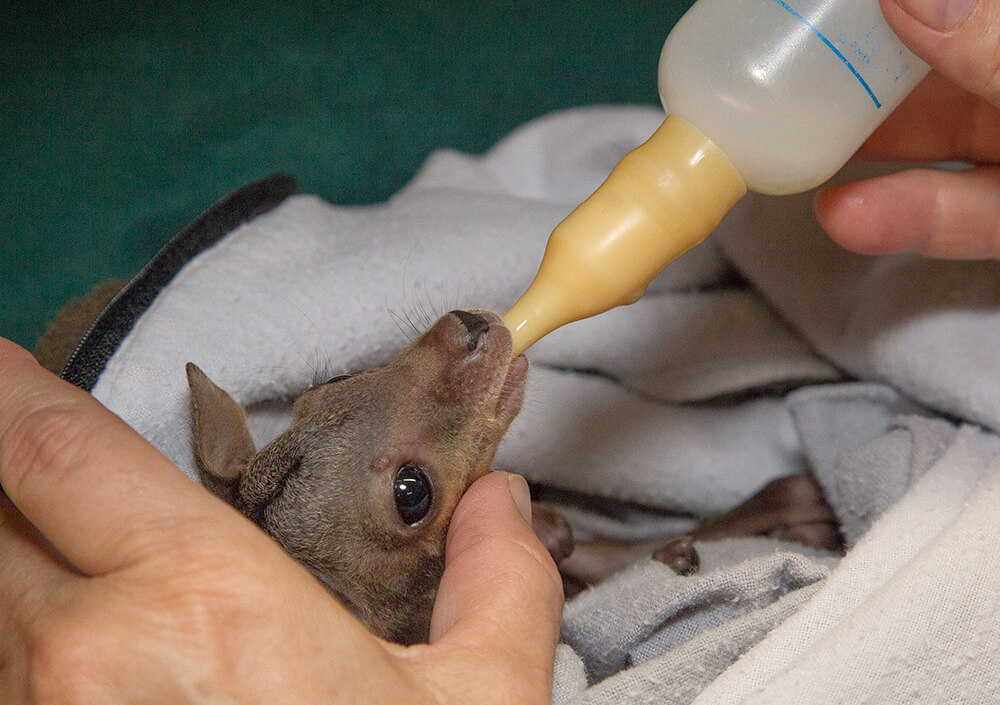
MORE PLEASE
How far the nipple is inserted into the baby’s mouth is another factor that must be taken into consideration. For this parma wallaby joey, the nipple is not inserted as far as it could be.
Thankfully, there are some commercial products available. Bottle nipples manufactured for humans (including those made for premature babies) work well for primates and some carnivores. Those intended for puppies and kittens are useful for some exotic species. Domestic goats, sheep, and cows are reared on specific nipples available through ranch supply houses. Some mammals have quite specific needs: for marsupials, bottle nipples from Australia are used, which are made particularly for these species.
In addition to the shape, the texture and softness of the nipple must be taken into account. And, of course, the size of the hole that allows the milk to flow must be just right. If the nipple is too soft, or the hole is too large, milk flows out too quickly. This can overwhelm the baby and cause serious harm if the milk is inhaled into the lungs. On the other hand, when the milk flow is too slow, the neonate consumes insufficient nutrition.

SOMETHING FOR EVERYONE
1. Serval: Designed for human “preemies,” the Ross special care nipple works well for small to medium animals, like a serval kitten or small primates.
2. Kudu: A nipple designed for domestic hoofed animals is just right for a lesser kudu calf. Some manufactured nipples have a softer texture than others. Animals sometimes show a preference for the feel.
3. Red River Hogs: There’s a reason this bottle-topper looks familiar—it’s the same type commonly used for human babies. In this case, what’s good for a person is good for a red river hog piglet.
4. Gorilla: This orthodontic nipple—designed for humans—is preferred by large primates like baby gorillas.
5. Wallaby: Wallaby joeys have a shallow nursing behavior rather than a strong nursing reflex, so a nipple that is both soft and narrow is used.
Inside the Zoo’s Neonatal Assisted Care Unit, there’s a cupboard where the bottle nipple selection is kept. This treasure trove is extensive, but sometimes even this resource falls short. Creativity and innovation are needed in extra-special cases.
Several years ago, the nursery was charged with hand-rearing Chinese water deer. These fragile babies were especially challenging, since they were tiny with small, narrow palates. The females had given birth to multiple babies, all with finicky appetites. None of the nipples tried were ideal. Feeding times were lengthy and frustrating; when the last fawn in the bunch was fed, it was almost time to start over again.
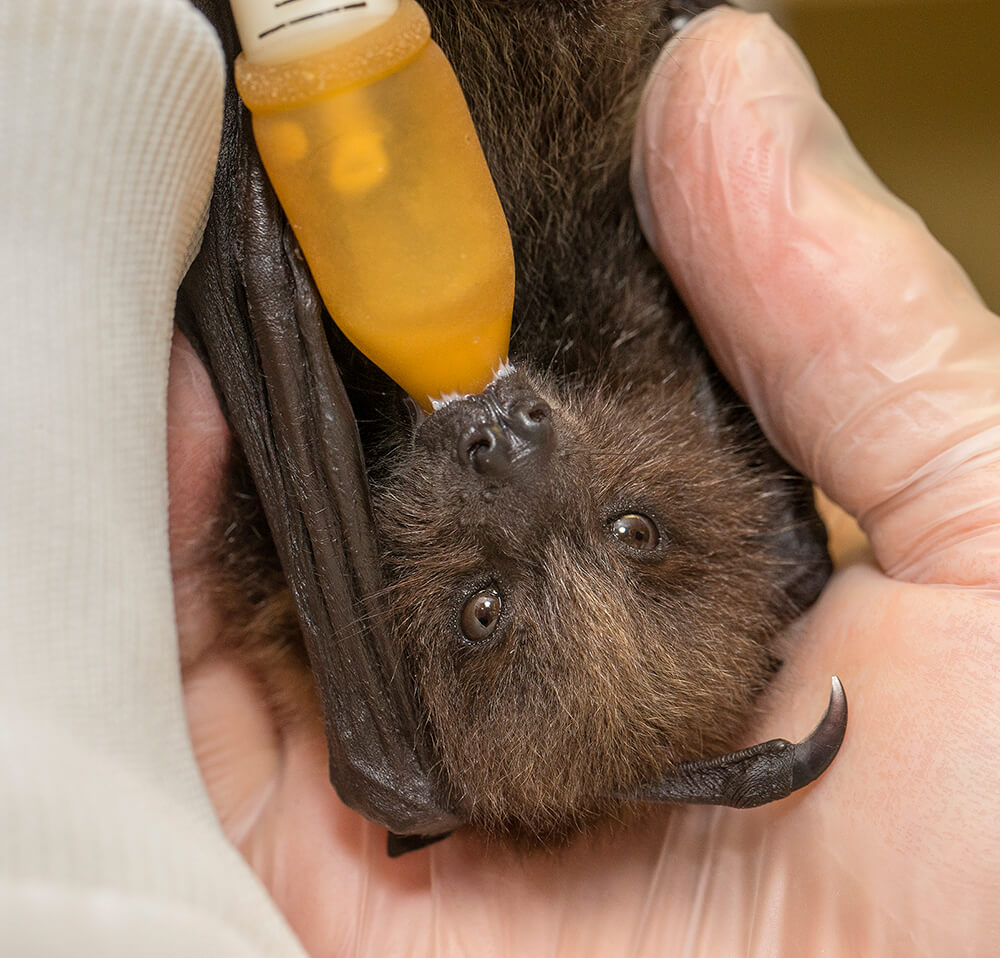
PERFECT POSITION
Finding the most comfortable feeding position for a baby takes persistence and flexibility—especially with a species like this Rodrigues fruit bat pup.
Keeper Pamela Sturm (now retired) was one of the senior staff frequently pulled into the nursery when it was busy. Pam is a true craftsperson who can sew, knit, bead, and make almost anything creatively. She devoted her considerable talents to the creation of a suitable water deer nipple. First, Pam located some liquid latex and fashioned a mold using the probe of a thermometer. After powdering the mold to prevent sticking, Pam painted the latex over it. When it dried, we tried it out—the result was a resounding success with the water deer fawns. Pam had created the first “zoo-manufactured nipple.” These nipples were used for many years to bottle feed various small hoofed species. Unfortunately, they eventually wore out, and the latex Pam used was no longer available.
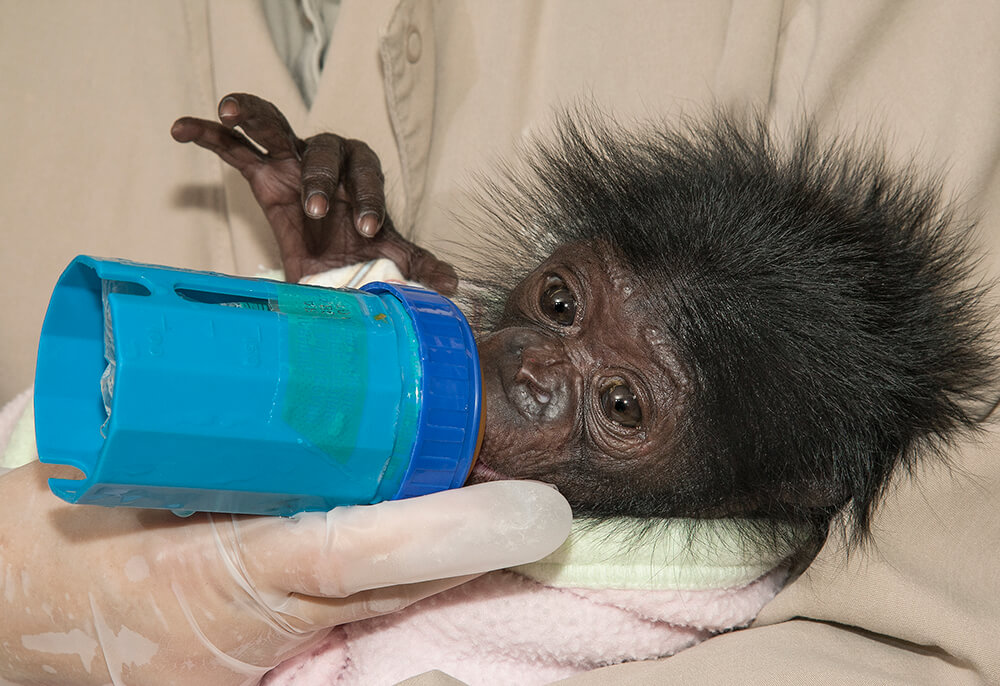
EYE ON THE PRIZE
When bottle feeding a baby animal, the keeper vigilantly monitors the neonate throughout the feeding to make sure everything is going smoothly.
A reliable, more durable product was needed. We were lucky to find Jeff Broz, a model maker who kindly and patiently took on the project. He began by experimenting with different types of food-safe silicone and creating various mold designs. After some trial and error, Jeff arrived at the perfect design and found a soft, stretchy silicone called dragonskin. This product delivers the proper “mouth feel” as well as reliable durability. The resulting nipple has been used extensively at SDZG and shared with zoos worldwide.
So, the next time you see a nursery keeper bottle feeding a baby on Zoo or Safari Park grounds, take time to notice and appreciate the not-so-simple nipple on the end of that bottle. It can be a life saver for the newborns cared for each day.

